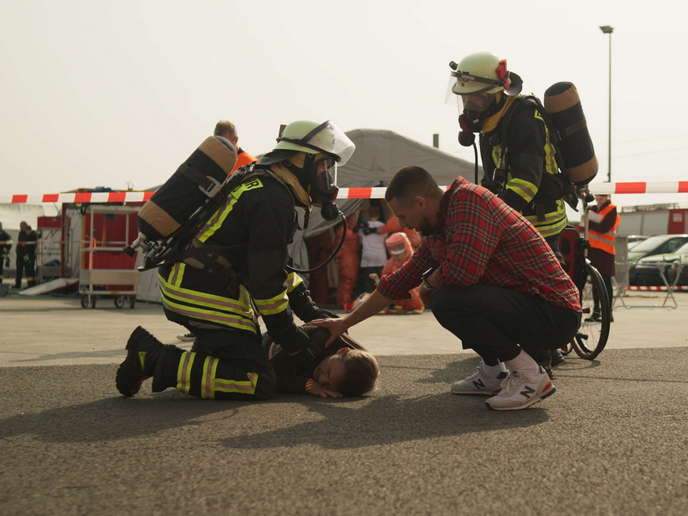Boosting first responders’ response to hazardous threats
The EU-funded PROACTIVE(opens in new window) project sought to enhance social resilience as well as preparedness against chemical, biological, radiological, nuclear and explosive (CBRNe) risks. It focused on better articulating first responders’ protocols to cater to the needs of vulnerable citizen groups – fostering fairness, accessibility and inclusivity in crisis management.
Project activities
The project engaged with over 100 practitioner organisations from 25 countries and more than 50 civil society organisations, including vulnerable groups from 20 countries. This network was actively involved in a series of research and innovation activities. Project members employed social science and humanities methods, such as literature reviews, surveys, workshops, interviews and focus groups. The team started with a desk research phase, reviewing 95 guidance documents and 41 academic papers. Furthermore, two online surveys and several workshops were conducted to understand practitioners’ views and first responders’ gaps in dealing with citizens. PROACTIVE also co-organised three field training exercises in Germany, Italy and then Belgium, where local community members were recruited as role-play victim volunteers. Each exercise was designed with a progressive learning approach, with increasing scale and complexity, allowing project members to study the interactions between CBRN practitioners and civil society members.
Actionable tools to raise awareness
Throughout its 52-month course, PROACTIVE delivered evidence-based recommendations and created several tools through an iterative design process. “Altogether, our actionable and easy-to-use tools and recommendations should hopefully allow CBRN practitioners and policymakers to improve societal resilience,” notes project coordinator Grigore Havarneanu. Some of these tools were tested during field exercises. The combined results from the project research streams were used to create 11 core recommendations that aim to enhance the standard operating procedures of practitioners as well as cooperation, training, public awareness and the response phase. A major achievement has been the development of the PROACTIVE Crisis Communication System. “This tool improves two-way communication between civil society and first responders and increases preparedness through its CBRNe Library,” states Havarneanu. It comprises three tools, each targeting different users: law enforcement agencies, practitioners and the public. Furthermore, the system has an open API, allowing it to interface with existing technologies and social media platforms. PROACTIVE has also developed pre-incident public information materials to raise public awareness about CBRN and CBRNe threats. These materials have been positively received and have shown their effectiveness in influencing knowledge, understanding and confidence in recommended behaviours over the long term. Considering the needs of vulnerable groups, project members have crafted an Aide Memoire for training exercises. This guide should aid exercise planners in ensuring that the needs of diverse citizens, especially the vulnerable, are met. Ultimately, the team have assembled a policymaking toolkit comprising a whitepaper and three policy briefs. These publications focus on improving crisis communication, managing children in CBRNe incidents, and facilitating interaction between first responders and civil society organisations.
A human-centric approach
PROACTIVE was a pioneering endeavour in CBRN preparedness and response. “While numerous EU-funded projects have approached this topic from a technical perspective – focusing on the development of new sensors, detection capabilities or personal protective equipment – PROACTIVE took a different approach. It chose to put people at the heart of its strategy, emphasising the human factor and behavioural aspects,” highlights Havarneanu. The project has also been the first of its kind to include representatives from vulnerable groups, marking a significant achievement in the European R&I world. “In conclusion, PROACTIVE has been instrumental in promoting a better CBRNe security culture, one that moves beyond the panic myth and increases social resilience,” concludes Havarneanu.







